If you are like most people, you only get concerned about tire tread depth when you notice that your tires are not gripping the road like they used to, or when you take your vehicle in for service and are told your tires need replacing.
However, the reality is that knowing what your tire tread depth in millimetres (mm) is – and knowing how to measure tire tread depth – is important information to know as a driver. Tire tread depth can affect your driving and your safety on the road very quickly, as a tire with worn out tread won’t give you the traction you might need in certain driving conditions, such as wet or snowy roads .
You may be wondering how to check the tire tread on your vehicle. Luckily, measuring tire tread depth is relatively easy and there are a couple of ways to do so. One easy way involves using a coin, such as a Canadian dime or quarter. Another is with a tire tread depth gauge. Below, we explain these two methods in better detail.
For real accuracy in checking tread wear, you may want to check the depth with a tire tread gauge. The latter are easily found at all your local hardware stores and online, and the ones that are sold for home use are relatively inexpensive.
When checking with a tread depth gauge, simply ensure your vehicle is parked securely, and then take the gauge and insert it into the grooves (cutouts) on the tread of your tire. When the head of the gauge touches the inside of the tread, you can then read the tire gauge (just like a tire pressure gauge) and see what your tread depth is in mm (millimetres). Any tread depth over 6 mm means your tires are safe and you can continue using them.
If you tire tread depth is 4/32”, then it is time to start looking for a new set of tires. And, if your tire tread depth is 2/32” or less, then you are actually driving in a highly dangerous condition and should seek to purchase a new set of tires immediately.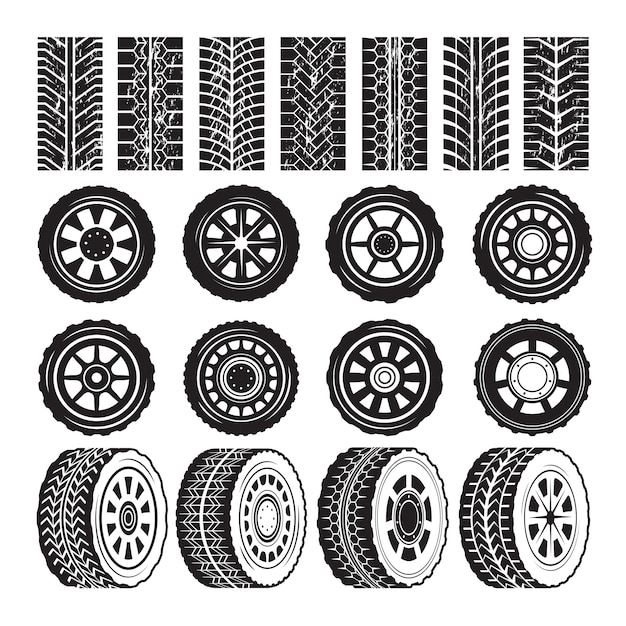 A tread depth of 2/32” or lower can significantly impact your ability to stop safely in wet or snowy conditions, and is considered to be very unsafe.
A tread depth of 2/32” or lower can significantly impact your ability to stop safely in wet or snowy conditions, and is considered to be very unsafe.
One of the simplest ways to quickly check tire tread in Canada is by using a coin, such as a dime (10 cent coin). So, go head and dig into that coin jar, or under the couch cushions and look for a dime or a quarter.
Again, ensure that your vehicle is parked safely and securely first. Then, take a dime and turn it so that the Queen’s head is facing towards the ground – no disrespect to the Queen – and insert the coin into your tire tread groove. If the Queen’s head – including her crown – are fully visible to your eye, then it is time to replace your tires – ASAP.
If you see less of the Queen, then it is likely your tread depth is 4/32” or higher, meaning you should keep your eyes on your tires, but that you are likely safe enough to continue driving.
If you don’t have a dime handy, you can also use a Canadian quarter to check tire tread depth in Canada.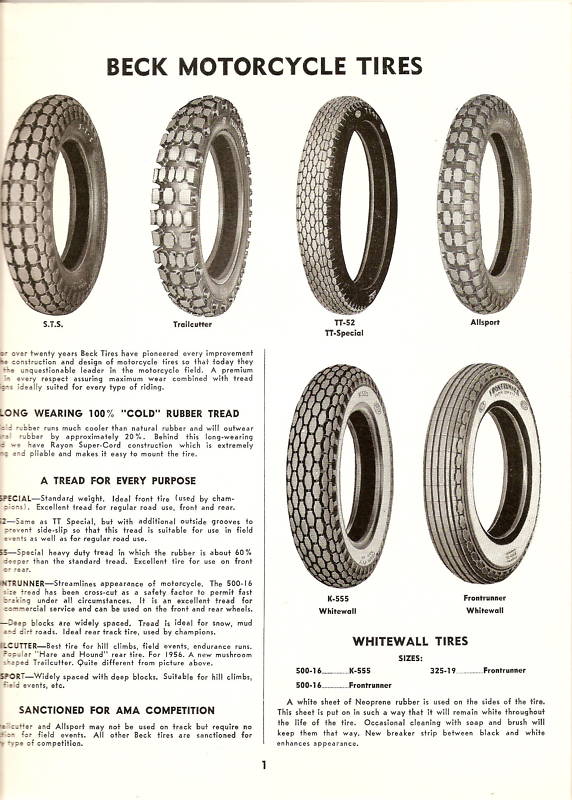 Following the same rules as checking with a dime, when you insert your quarter into the tread with the Caribou’s head facing down. If you can still see the Caribou’s nose, you are starting to experience a lower tread depth and should start looking for a new set of tires.
Following the same rules as checking with a dime, when you insert your quarter into the tread with the Caribou’s head facing down. If you can still see the Caribou’s nose, you are starting to experience a lower tread depth and should start looking for a new set of tires.
It is best to check each of your four tires, just to be completely safe, especially if you have replaced single tires over the years and are driving with a mismatched set, or tires from different brands. Tires all wear quite differently, and the average tire tread life can vary between different brands and types, so it is possible that one or two tires have less tread depth than others. Or, you may have purchased a used car that has different tire brands installed on it, and so it’s good to develop a baseline for each tire in terms of tread depth.
Based on recommendations you should measure your tire tread every month. Of course, once you have determined that you have 4/32” or less tread depth on your tire, then you should check more frequently, but based on ensuring the safety of yourself, your family and of course other drivers on the road, you should be looking to replace your tires.
It is also a good practice to check tire tread depth before the winter season, because you want to make sure that you have at least 6/32” of tread depth to tackle winter road conditions. If your tires don’t meet this minimum requirement, then you may want to think about purchasing a set of winter tires for your vehicle.
At the end of the day, the main reason to be concerned about the available tread depth on your tires is safety. Tires with low tread do not grip the road as well as newer tires, and with a low tire tread you could experience:
For the sake of safety for both yourself and your family, it is important to regularly check your tire tread depth. Then, if you have determined that you need to replace your tires, you can start shopping.
Then, if you have determined that you need to replace your tires, you can start shopping.
One of the best ways to shop for a new set of tires to replace those with low tread depth is by looking online at a tire seller such as blackcircles.ca. Of course, if you have questions regarding tire tread depth and whether it’s a good time to replace the current tires on your vehicle, then you can reach out to the team at blackcircles Canada, and we will be happy to help you.
learn more about the safety of your tires
When it comes to checking tire tread, there are a number of methods that can help you know if it’s time to replace a tire. Heavily worn tread will prevent a tire from performing as designed and can lead to unsafe driving conditions. One of the simplest, most common ways to check tread depth requires nothing more than a penny and a few moments of your time.
In the United States, tire tread depth is measured in 32nds of an inch. New tires typically come with 10/32” or 11/32” tread depths, and some truck, SUV and winter tires may have deeper tread depths than other models. The U.S. Department of Transportation recommends replacing tires when they reach 2/32”, and many states legally require tires to be replaced at this depth.
The idea of the penny test is to check whether you’ve hit the 2/32” threshold. Here’s how it works:
Place a penny between the tread ribs on your tire. A “rib” refers to the raised portion of tread that spans the circumference of your tire. Tire tread is composed of several ribs.
Turn the penny so that Lincoln’s head points down into the tread.
See if the top of his head disappears between the ribs. If it does, your tread is still above 2/32” , If you can see his entire head, it may be time to replace the tire because your tread is no longer deep enough.
When performing the penny tire test, remember not only to check each tire, but to check various places around each tire.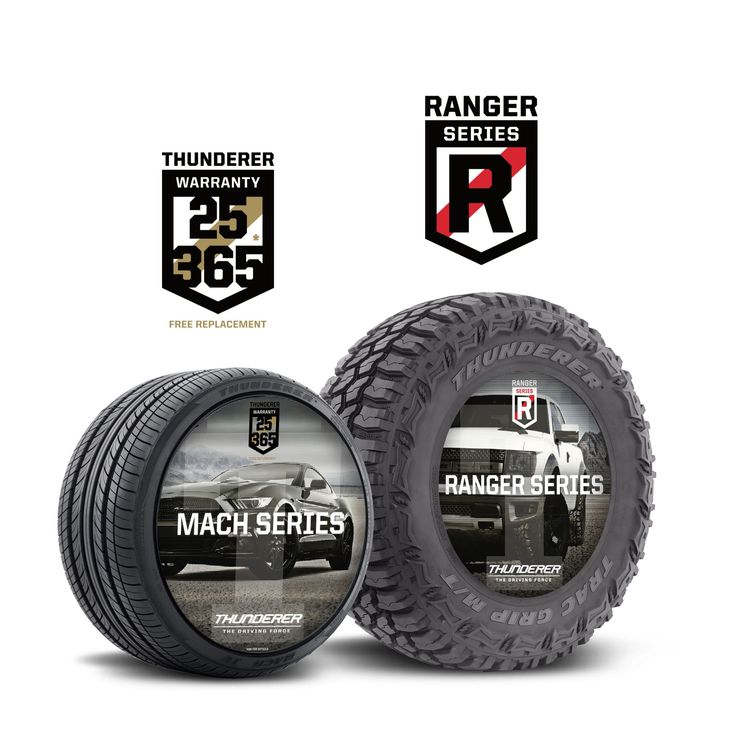 Pay special attention to areas that look the most worn. Even if parts of your tread are deeper than 2/32”, you should still replace the tire when any areas fail the penny test.
Pay special attention to areas that look the most worn. Even if parts of your tread are deeper than 2/32”, you should still replace the tire when any areas fail the penny test.
Consistent wear around the whole tire is normal, but uneven tread wear could be a sign of improper inflation, wheel misalignment, or a variety of other things. If you see uneven tread wear, you should have a technician inspect your vehicle.
A simple way to check your tire tread depth is by using a tread depth gauge. You can find tire tread depth gauges at your local auto parts store. There are many models available, but an inexpensive simple graduated probe gauge will work just fine. All you have to do is stick the probe into a groove in the tread and press the shoulders of the probe flat against the tread block and read the result. All gauges should measure in both 32nds of an inch and millimeters.
Another indicator of worn out tread already lives in your tires themselves. Every performance, light truck, or medium commercial tire comes equipped with indicator bars (or wear bars) embedded between the tread ribs at 2/32”. They’re there to help you monitor tread depth and make decisions about tire replacement. Just look to see if the tread is flush with the indicator bars. If they are, it’s time to replace the tire.
Every performance, light truck, or medium commercial tire comes equipped with indicator bars (or wear bars) embedded between the tread ribs at 2/32”. They’re there to help you monitor tread depth and make decisions about tire replacement. Just look to see if the tread is flush with the indicator bars. If they are, it’s time to replace the tire.
While the penny tire test does deliver on what it promises – indicating whether tread has reached the legal limit – it may not be the best indicator of whether your tires are safe for the road. Tire performance can diminish significantly before your tread hits 2/32”. Even though the law deems fit for safe driving may not prevent you from hydroplaning or losing control in rainy, slushy conditions. If you think your tires may be close to needing replacement, have them checked out by a licensed mechanic.
The tire tread is the outer part of the wheel that provides traction in all weather conditions.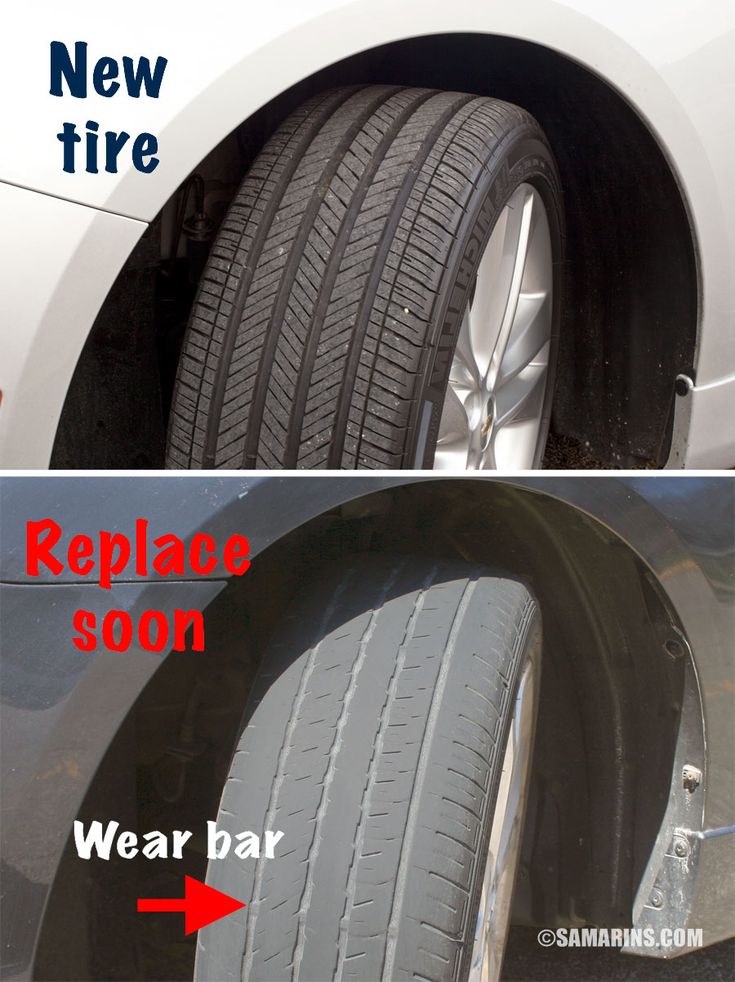 The protectors inevitably wear out during the operation of the car, the working height of the slope decreases. The residual tread depth should be periodically monitored and the set of tires should be renewed in time - this will reduce the risk of losing control of the car and save the car owner from fines from the traffic police.
The protectors inevitably wear out during the operation of the car, the working height of the slope decreases. The residual tread depth should be periodically monitored and the set of tires should be renewed in time - this will reduce the risk of losing control of the car and save the car owner from fines from the traffic police.
Tread wear rate depends on many factors:
Measuring the thickness of the tread layer will allow you to accurately determine the degree of tire wear and make a decision in time to replace them with new ones.
Different tires have different wear limits. Tread depth affects vehicle handling and road safety.
| According to Chapter 5 of the SDA, limiting norms for the height of the tread pattern have been established. For category M1 - passenger cars - as well as vehicles of categories N1, O1 and O2, the minimum allowable value is 1.6 mm. When using winter tires on snowy or icy surfaces - the limit is 4 mm. |
Let us explain what categories of vehicles we are talking about:
N1 - vehicles intended for the carriage of goods, having a technically permissible maximum mass of not more than 3.5 tons;
O1 - trailers, the technically permissible maximum mass of which is not more than 0.75 tons;
O2 - trailers, the technically permissible maximum weight of which is over 0.75 tons, but not more than 3.5 tons.
The traffic police officer has the right to measure the residual depth with a verified device. In case of a recorded violation, a fine is imposed on the car owner.
The new summer tire has an average tread depth of 7-8 mm. The service life of summer tires is usually 3-5 seasons with average mileage and moderate driving style.
| Residual height limitation by law is 1. |
Do not wait until the critical value is reached. Make sure you change tires in advance.
Winter tires are used in severe weather conditions: low temperatures, icy conditions, on snowy road surfaces. Worn elements make the tire ineffective on slippery winter roads. Accordingly, a more serious approach to the condition of the tire tread is needed.
Non-studded friction tire (velcro) with tread depth 8-9mm. A new studded model - from 9 to 11 mm, some firms produce a tread with a height of 12-18 mm.
| If the tread wear is up to 4-5 mm, the winter set of tires needs to be replaced. In addition, the loss of more than 50% of the metal spikes is also a reason to change the car's shoes. |
The average life of winter tires is 2-4 years.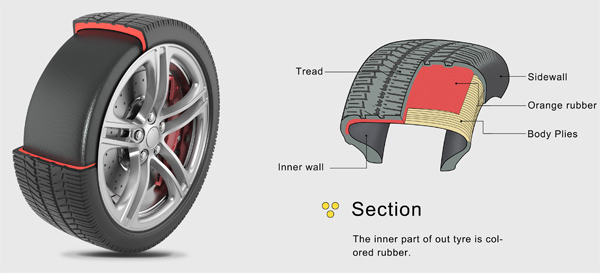
Universal all-weather is used in a temperate climate both in winter and in summer, it is optimal at temperatures from +10 to -10˚C. This type of tire is not suitable for use in snowfall or severe frosts. SDA allows the use of all-season tires in the winter if there is a special marking:
| All-season tires last 3-4 years on average. In summer, at high temperatures, all-weather tires wear out much faster. It is recommended to buy new tires when the tread layer is abraded to a value of 2-2.5 mm. |
You can estimate the remaining tread layer in various ways:
On some tire models there are special volumetric indicators in the form of jumpers. Check: if the tread layer is worn down to the level of the jumpers, the tire is not suitable for further use.
On the surface of certain types of tires, manufacturers knock out numbers of various depths.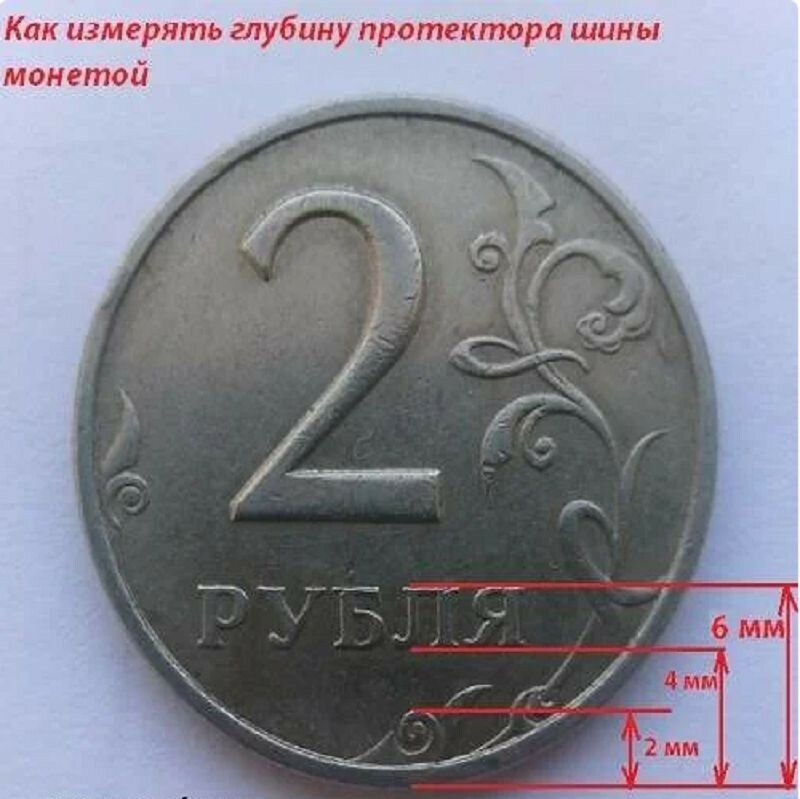 Depreciation is assessed visually - by the visibility of individual numbers.
Depreciation is assessed visually - by the visibility of individual numbers.
With the help of measuring instruments: from a metal ruler, caliper, depth gauge to an electronic tread depth gauge.
Many motorists measure the remaining tread depth with a coin. Warning: this method of measurement is not accurate. It will not show you actual tire wear figures.
Tire tread height should be measured at least at 6 different points, preferably at 9 or even 12: in the center and from both edges of the tread, at different points around the circumference of the tire. The measurement results at all specified points must match. If they do not match, then the tire wears unevenly. The driver should find out why this is happening. Some causes of uneven tire wear are low or high pressure in them relative to the regular one, suspension failure, extreme driving style.
Old tires have become unusable, the amount of tread remaining is approaching a critical line - no need to take risks, it's time to change your car's shoes.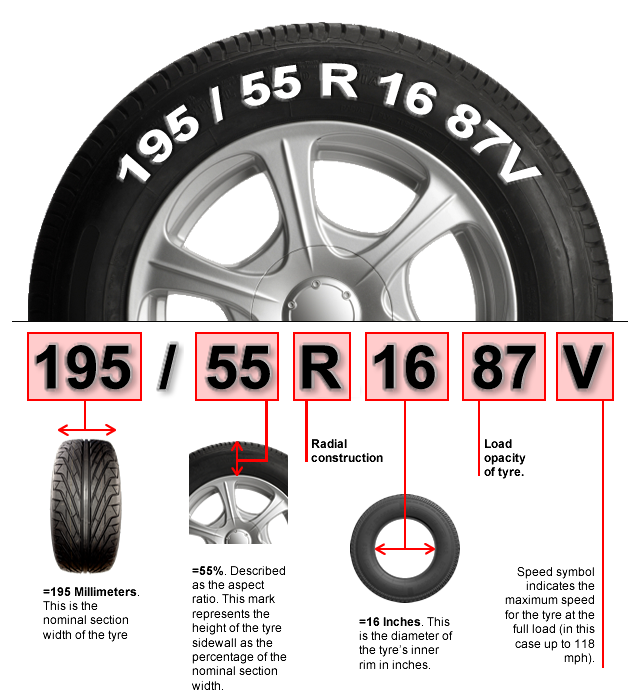 There is a great temptation to get by with small financial costs and purchase a set of used tires. Be careful!
There is a great temptation to get by with small financial costs and purchase a set of used tires. Be careful!
Sellers advertise used tires as good or excellent condition. Do not be too lazy to personally measure the height of the tread layer. And remember: for winter tires, a residual tread depth of 4 mm is already 100% wear.
When buying used tires with tires, it is important to remember that tires from different manufacturers and seasons initially have different tread heights (when they are new). And most importantly: the tires have, accordingly, different wear limits - the tread depth at which the tire begins to lose important characteristics. These differences are most noticeable in winter and summer tires. Keep these points in mind when measuring the remaining tread depth of used tires.
The quality of domestic roads, unfortunately, does not allow tires to be used for 7-10 years. If you still decide to buy a used kit, check the year of manufacture - it is better not to consider tires older than 8 years.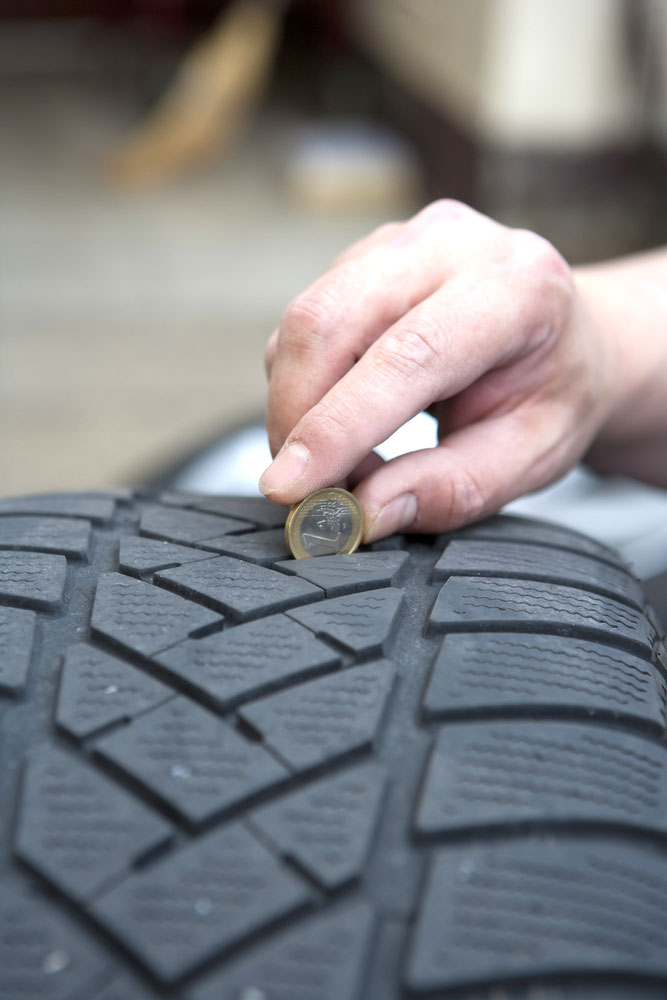
there is no guarantee for tires bought from hands;
the seller can cheat - for example, offer tires from different manufacturers in one set. Some especially enterprising salesmen even cut the tread on the worn rubber, as if the tires had not yet worn out;
you will have to spend a lot of time picking up tires from private sellers - much of what is put up for sale is only suitable for recycling;
Products may have hidden or visible defects. Visible are punctures, tears, cuts. A tire with a lot of damage can collapse in motion. Hidden defects include damage to the cord, which most often occurs after punctures or a strong blow. A car with such a malfunction may wiggle on the road, and it will be unstable;
the goods were stored in the wrong conditions, for example, under direct sunlight - this reduces the life of the tires and they will quickly become unusable, even if the residual tread depth is ideal;
it is not always possible to carry out a tire fitting in the presence of the seller, you will have to check the kit yourself after payment.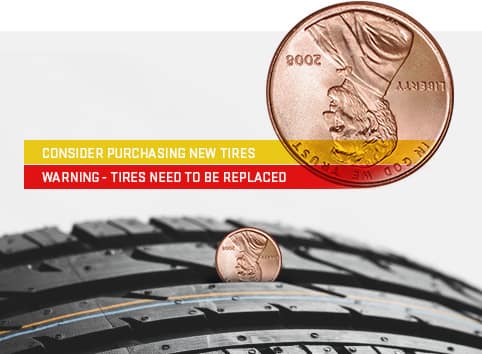
Without a specialist, there is a risk of buying tires that you cannot use. Don't skimp on safety. Purchasing a new set of tires will require more investment, but will pay off with a long period of trouble-free operation.
The maximum permissible residual tread depth for a passenger car is 1.6 mm in summer and 4 mm in winter.
SDA strictly regulate the residual height of the tread pattern. Violation of traffic rules is a reason for drawing up an administrative protocol.
For your own safety, replace worn tires on time. Better for new ones.
Tire wear in the United States is checked using a coin with the image of the first president of the country. A one-dollar coin is inserted into the groove of the tread with Washington's head down. If Washington's hair is visible, then it's time to buy new tires. A coin with a face value of 1 cent will also help to check the wear of automobile rubber. If the top of the Lincoln is visible, then the tires have reached the tire wear rate and must be replaced immediately.
If the top of the Lincoln is visible, then the tires have reached the tire wear rate and must be replaced immediately.
Tire wear can also be determined with a 1 euro coin. It must be inserted into that part of the tire where the tread is most worn. If the golden circle is in rubber, then the tire will still serve you. If the gold part of the coin is completely visible, then it's time to change the shoes of your car.
Tire wear can also be determined using Russian money. The domestic 2-ruble coin must be inserted into the protector with the eagle's head down. If the top of the bird is visible above the surface of the tire, then the tire has not yet reached the end of its life.
Premature tire wear can be avoided. According to the Research Institute of the Tire Industry (NIIShP), the "life" of half of the tires is reduced due to improper operation. After all, the service life of rubber largely depends on driving style, road conditions, compliance with the load index and correct tire pressure.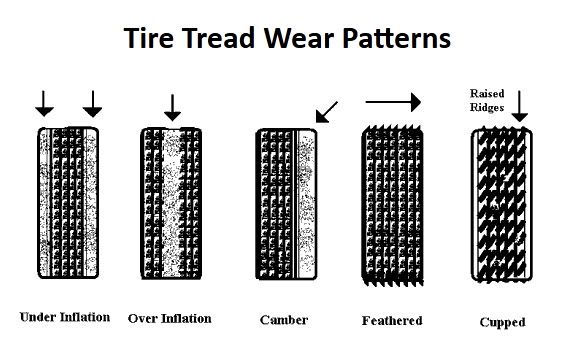 Therefore, it is not surprising that with the same model of car and “shoes”, the mileage of their tires can differ by several thousand kilometers.
Therefore, it is not surprising that with the same model of car and “shoes”, the mileage of their tires can differ by several thousand kilometers.
The main causes affecting premature tire wear
For new tires, the break-in process is important. The first 200-300 kilometers of newly purchased tires should be extremely careful, especially in winter or in rainy weather. This is due to the fact that before vulcanization, the treads of new tires are covered with a separating layer, which should be erased only during operation. Therefore, all types of rubber must be run-in.
Tire wear occurs in a variety of ways:
 Therefore, the car should not stand on tires for months. Before storing the machine, it is advisable to increase the tire pressure to 3.0 bar. So you can avoid deformation of the tire
Therefore, the car should not stand on tires for months. Before storing the machine, it is advisable to increase the tire pressure to 3.0 bar. So you can avoid deformation of the tire Uneven tire wear is normal because the tire is subjected to uneven loads while driving. In this case, a new wheel balancing will help. In most cases, when sawtooth teeth form on the transverse grooves of the profile, it is necessary to use cruciform wheel balancing. But this will only help with the correct geometry of the axis. This will change the direction of the tire. The sawtooth teeth will gradually disappear, along with them the noise will also disappear.
If you change wheels with asymmetric tread patterns regularly every 10,000 km, uneven wear of all tires can be avoided.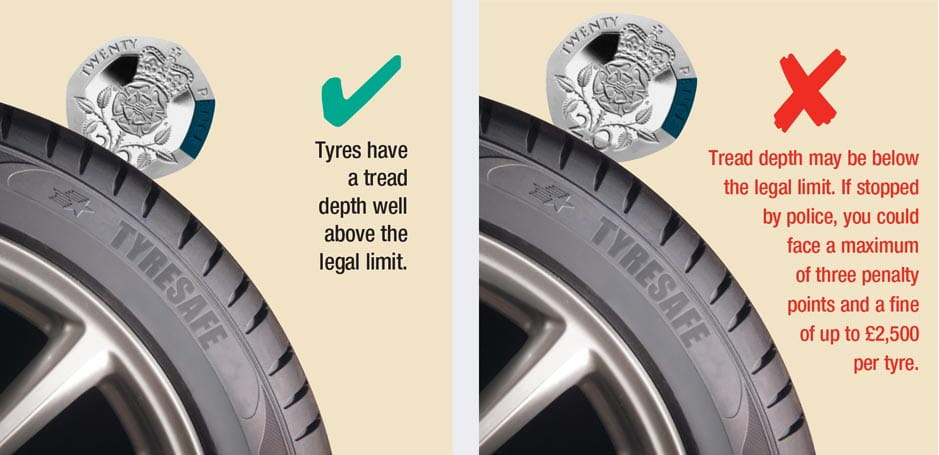 But the replacement must be done on one side. That is, the front right wheel should only change to the rear right, and vice versa.
But the replacement must be done on one side. That is, the front right wheel should only change to the rear right, and vice versa.
In 1992, a uniform wear rate for summer tires was established in Europe - the minimum profile depth for tires for cars, trucks and motorcycles is 1.6 mm. This requirement also applies in Russia. An exception to the rule are light wheels with a minimum tread height of 1 mm. But for wide-profile and summer tires, this rate is too small. With such a profile depth on a wet road, the tire will have poor handling. For safety reasons, summer tires should be changed already when the remaining profile depth reaches 2 mm (wide profile - 3 mm). Modern winter tires have a tread depth of 9, depending on the manufacturer.-12 mm. Permissible wear for them is 4-6 mm.
Many modern tires have built-in wear indicators in the form of small rubber pimples. They are soldered into the base of the protector. When the tire wears down to acceptable limits, the pimples become flush with the tread.